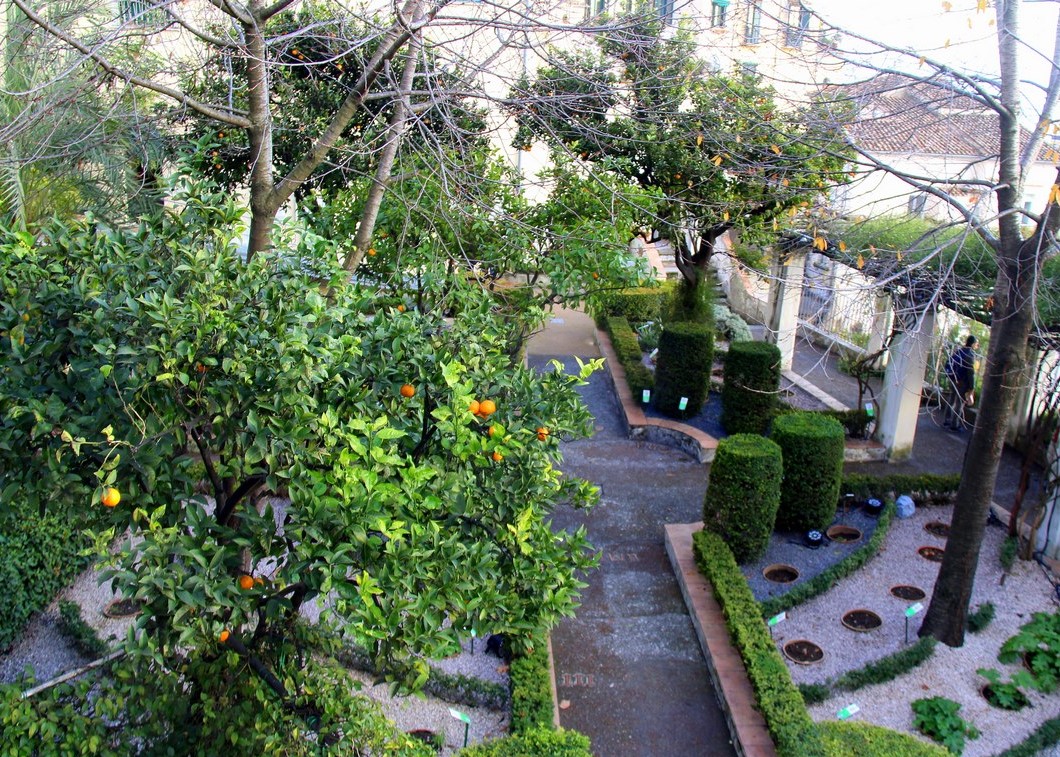
 Italian Botanical Heritage
Italian Botanical Heritage
Italian gardens: Minerva's Garden in Salerno
- WTI Magazine #108 Oct 20, 2018
-

 Italian Botanical Heritage
Italian Botanical Heritage
Minerva’s Garden is a botanical garden located in the ancient center of Salerno, close to the western walls of the medieval city along the course of the river Fusandola. During the Middle Ages it was used as a simple garden for educational purposes for students of the Medical School of Salerno, and for this reason it is considered a precursor of the botanical gardens understood in the modern meaning of the term.
The gardens have belonged to the Silvatico family since the 12th century, but after the Second World War, the last owner donated them to the Asylum for Beggars; they later passed to the municipality of Salerno. Among the historical architectural elements present, attributable between the 17th and 18th centuries, the most characteristic is the long staircase, emphasized by cross-shaped pillars, which support a wooden pergola. The staircase, which connects and visually frames the various terraces of the garden, is built on the ancient walls of the city and allows a wide and privileged view of the sea, the old town and the hills.
A complex system of water distribution, consisting of channels, tanks and fountains (one for each terrace), has allowed, over the centuries, the maintenance of cultivation of the plots. The medieval Salerno therapeutics taken up in the gardens and, consequently, also the studies of Botanical medicine, are based essentially on the "doctrine of the four humors" based in turn on the ancient "theory of the elements". Disease, understood as the abundance of a mood towards others, must be combated by using a product of an opposite nature to the surplus mood. Hence the importance of classifying plants with the same criteria used for the study of human moods. The flowerbeds of the first terrace, already divided into four segments thanks to the two pre-existing orthogonal paths, are well suited for this didactic representation.
In the garden there are two permanent exhibitions: the first of painted medieval tiles found in the attic of Palazzo Capasso (a building inside the garden) during the restoration work, and a second as a review of medieval botanical design. During the year, then, there are exhibitions and events related to the world of the Medical School of Salerno, botany and the environment.
Plants
Inside the Garden grow more than 200 plant species, even rare, mostly those used in the Middle Ages as medicinal plants, including the legendary mandrake, which was believed to have extraordinary powers; the Colocasia esculenta (already mentioned by Silvatico in 1300); and the Indian ginseng (Withania somnifera).